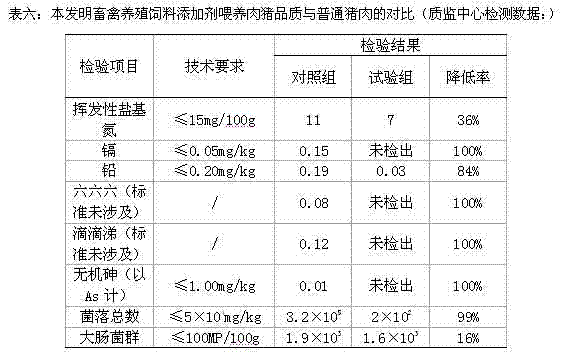Method for producing aerobic fermentation photosynthetic bacteria livestock culturing feed additive
A technology for feed additives and photosynthetic bacteria is applied in the field of producing aerobic fermentation photosynthetic bacteria for livestock and poultry breeding feed additives.
- Summary
- Abstract
- Description
- Claims
- Application Information
AI Technical Summary
Problems solved by technology
Method used
Image
Examples
Embodiment 1
[0044] Add 2.0 grams of sodium malate, 2.0 grams of sodium acetate, 2.0 grams of ammonium chloride, 2.0 grams of potassium dihydrogen phosphate, 0.2 grams of calcium chloride, 6.0 grams of sodium bicarbonate, 1.0 grams of magnesium chloride, and trace element solution into 2 liters of deionized water 2.0mL, vitamin solution 2.0mL, yeast extract 1.0g, to fully dissolve each component; then adjust the pH value to 6.8-7.2 with 5% sodium hydroxide solution by weight percentage, and then put it into a conical flask to obtain an expanded culture Base; sterilize the expansion medium at a temperature of 121° C. for 30 minutes to obtain a sterilized expansion medium;
[0045] When the sterilized expansion medium is cooled to 30°C-35°C, insert Rhodopseudomonas palustris according to 10% of the volume of the sterilized expansion medium ( Rhodopeudomonas palustris Strain preservation number CGMCC1.2352), fermented for 3 days at a temperature of 27°C and a light intensity of 2200 lux to o...
Embodiment 2
[0051] Add 1.0 g of sodium malate, 1.0 g of sodium acetate, 1.0 g of ammonium chloride, 1.0 g of potassium dihydrogen phosphate, 0.1 g of calcium chloride, 3.0 g of sodium bicarbonate, 0.5 g of magnesium chloride, and trace element solution into 1 liter of deionized water 1.0mL, vitamin solution 1.0mL, yeast extract 0.5g, to fully dissolve each component; then adjust the pH value to 6.8-7.2 with 5% sodium hydroxide solution by weight percentage, and then put it into a conical flask to obtain an expanded culture Base; sterilize the expansion medium at a temperature of 121° C. for 30 minutes to obtain a sterilized expansion medium;
[0052] When the sterilized expansion medium is cooled to 30°C-35°C, insert Rhodopseudomonas palustris according to 11% of the volume of the sterilized expansion medium ( Rhodopeudomonas palustris Strain preservation number CGMCC1.2352), fermented for 3 days at a temperature of 27°C and a light intensity of 2800 lux to obtain a reddish-brown strain ...
Embodiment 3
[0056] Add 1.0 g of sodium malate, 1.0 g of sodium acetate, 1.0 g of ammonium chloride, 1.0 g of potassium dihydrogen phosphate, 0.1 g of calcium chloride, 3.0 g of sodium bicarbonate, 0.5 g of magnesium chloride, and trace element solution into 1 liter of deionized water 1.0mL, vitamin solution 1.0mL, yeast extract 0.5g, to fully dissolve each component; then adjust the pH value to 6.8-7.2 with 5% sodium hydroxide solution by weight percentage, and then put it into a conical flask to obtain an expanded culture Base; sterilize the expansion medium at a temperature of 121° C. for 30 minutes to obtain a sterilized expansion medium;
[0057] When the sterilized expanded medium was cooled to 30°C-35°C, 9% of the volume of the sterilized expanded medium was inserted into Rhodopseudomonas palustris ( Rhodopeudomonas palustris Strain preservation number CGMCC1.2352), fermented for 4 days at a temperature of 27°C and a light intensity of 1500 lux to obtain a reddish-brown strain cult...
PUM
 Login to View More
Login to View More Abstract
Description
Claims
Application Information
 Login to View More
Login to View More - R&D
- Intellectual Property
- Life Sciences
- Materials
- Tech Scout
- Unparalleled Data Quality
- Higher Quality Content
- 60% Fewer Hallucinations
Browse by: Latest US Patents, China's latest patents, Technical Efficacy Thesaurus, Application Domain, Technology Topic, Popular Technical Reports.
© 2025 PatSnap. All rights reserved.Legal|Privacy policy|Modern Slavery Act Transparency Statement|Sitemap|About US| Contact US: help@patsnap.com



